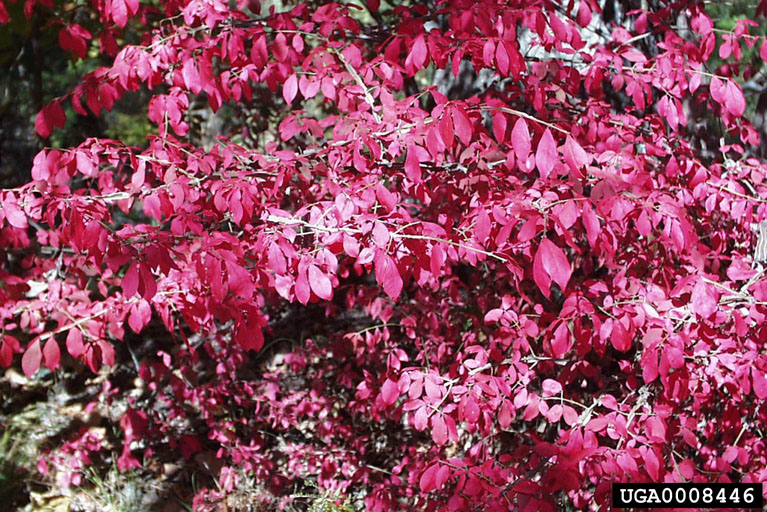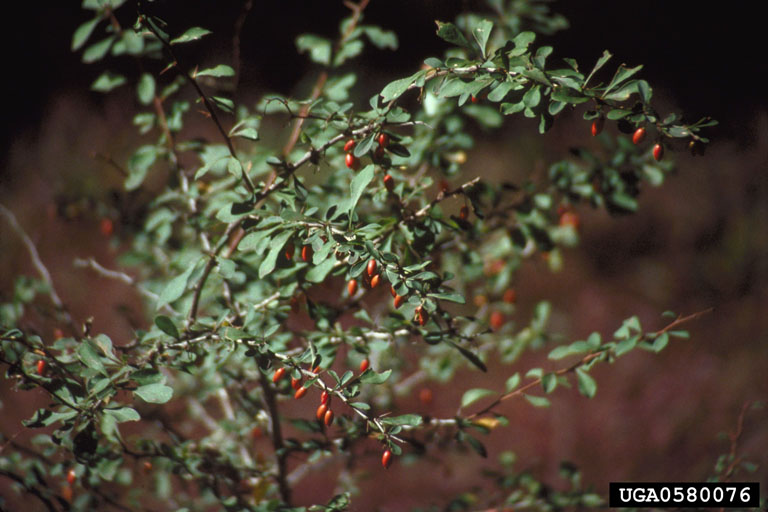Shrubs Bred for Sparse Seeds Still Spread
This post contributed by Celia Smith, ESA Education Programs Coordinator
 In response to growing concern about the ecological and economic impact of invasive species, there has been increasing interest in developing cultivars of ornamental shrubs that produce few or sterile seeds. However, in a study published in the October issue of BioScience, researchers at Washington University in St. Louis and the Chicago Botanic Garden found that many cultivars currently marketed as “safe” are still potentially invasive.
In response to growing concern about the ecological and economic impact of invasive species, there has been increasing interest in developing cultivars of ornamental shrubs that produce few or sterile seeds. However, in a study published in the October issue of BioScience, researchers at Washington University in St. Louis and the Chicago Botanic Garden found that many cultivars currently marketed as “safe” are still potentially invasive.
Invasive plant species present an ecological paradox. Many popular woody plants used in horticulture and landscaping grow readily in varied moisture and soil conditions; display numerous, long-lived blooms; and produce succulent fruits that attract birds and other backyard visitors. Yet the same characteristics that allow these species to easily adapt and thrive can also lead to invasive growth beyond the confines of a carefully managed garden.
In an effort to evade laws controlling the spread of invasive plants, the selection of common woody shrubs such as Japanese barberry and burning bush to produce fewer seeds has become popular, resulting in cultivars that are advertised as ‘safe’ or ‘non-invasive.’ Yet there is very little research to define what makes a cultivar ‘safe,’ let alone confirm whether or not it could be used to effectively control population growth of a species.
Given this lack of evidence, the authors reasoned that population modeling of 19 common species of shrubs, trees, herbs and grasses could yield much needed data on the effects of seed reduction. Their results were illuminating: simply limiting seed production in cultivars was insufficient to reduce invasive potential, because seed abundance is just one of many traits that influence how fast or densely a species can grow (case in point: click here for another timely blog post about a study documenting the effects of plant height on seed dispersal). For example, according to the BioScience article, reducing the seed production of long-lived species—like the shrubs and trees at your local nursery— by even 95% would still fail to control population increases. Furthermore, the offspring of cultivars do not necessarily produce fewer seeds themselves; in fact, they could prove significantly more fecund than their parents if they were to cross-breed.
Based on these results, the most effective way to manage the dispersal of invasive plant species may be to invest the time and funds necessary to research, develop and market more varieties that are completely sterile. An alternative solution may be to encourage gardening using native plant species.
Of course, this study is predicated on the assumption that invasive species are inherently harmful; indeed, the authors lead off by stating: : “Invasive woody plants pose serious threats to native species and ecosystems… and 82% of the invasive trees and shrubs in the United States were introduced through horticulture.”  However, there are differing viewpoints on the potential harm or even value of non-native species. This issue was highlighted in a June 10 EcoTone post describing a controversial Nature essay in which the authors argued that species should be evaluated based on their net environmental impact, regardless of their origin.
However, there are differing viewpoints on the potential harm or even value of non-native species. This issue was highlighted in a June 10 EcoTone post describing a controversial Nature essay in which the authors argued that species should be evaluated based on their net environmental impact, regardless of their origin.
Nevertheless, the fact that fecundity of non-native species used in horticulture has a powerful impact on local ecosystems and biodiversity cannot be disputed. What do you think? What is your opinion on the development of sterile lines of exotics for commercial sale? Do you have experience gardening or landscaping with native plant species?
Photo credits: Winged burning bush, Paul Wray, Iowa State University; Japanese barberry, Jil Swearingen, National Park Service